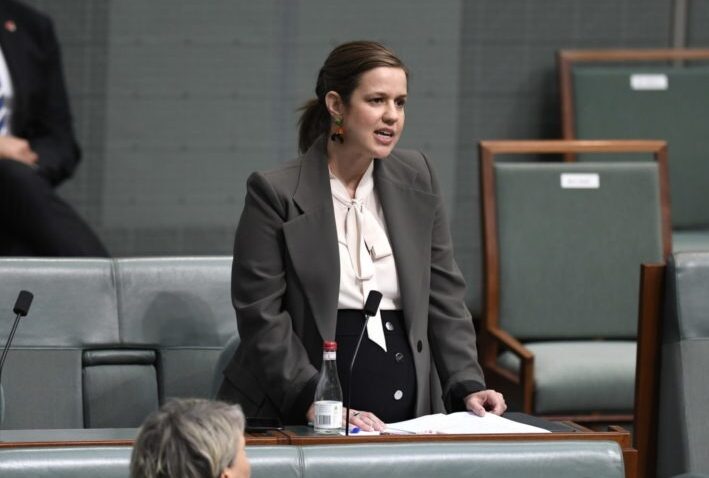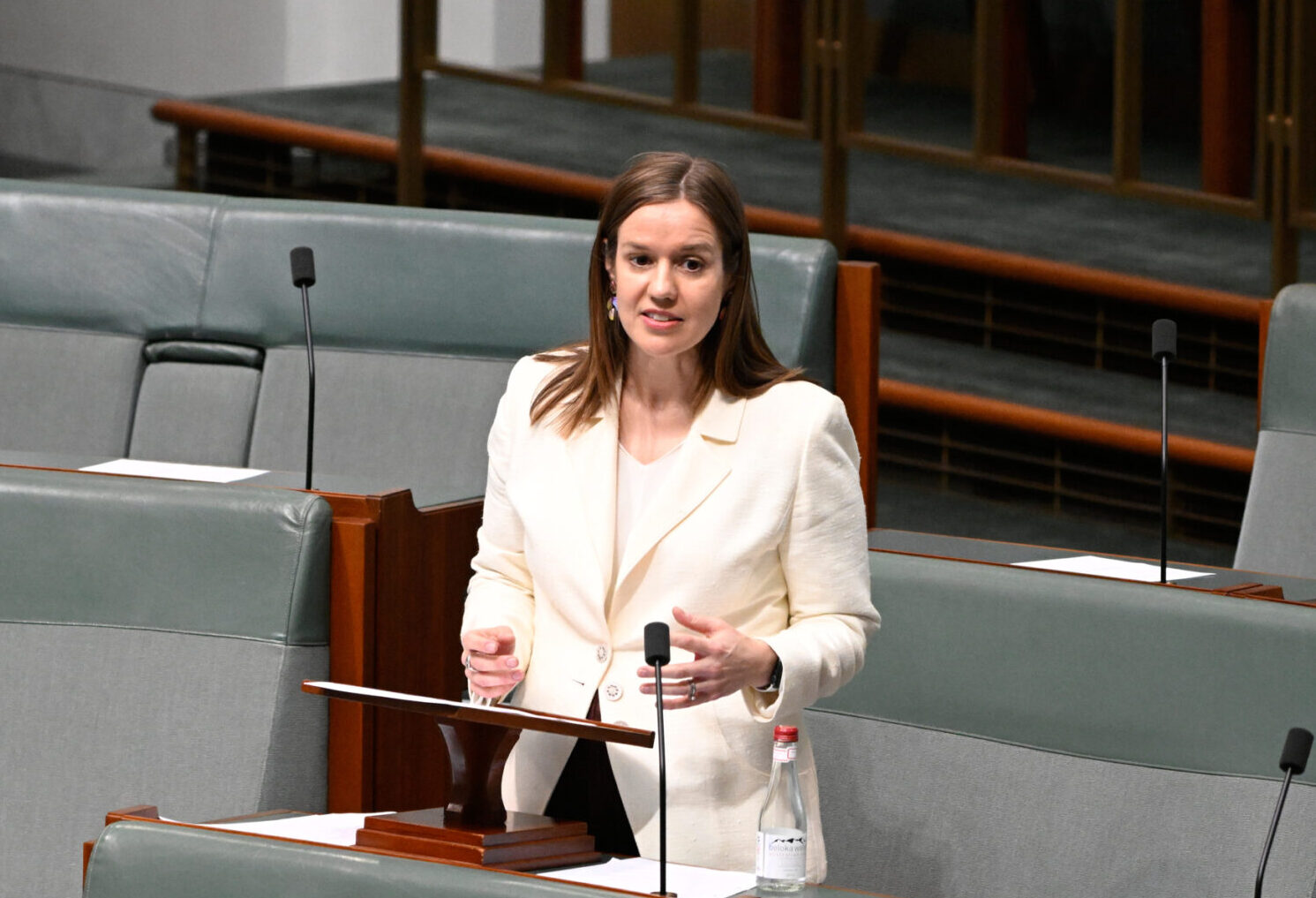I’m pleased to speak in support of paid parental leave. Of course, it was Labor that introduced Australia’s national Paid Parental Leave scheme which started on 1 January 2011. At that time I worked for the minister responsible for its introduction, Jenny Macklin, and I had the opportunity to hear from women across the country about just how significant this change would be—women who worked in businesses and industries who’d never before had access to any paid leave when they had a baby; women in retail, in hospitality, in small businesses, who could finally take the time they needed to look after their baby without facing immense financial stress. Since that time when Labor introduced paid parental leave, I’ve had the experience of having my own baby, and that’s given me a new understanding of just how life-shaking, world-turning-upside-down that is—the sleepless nights and days; the worries about whether she is being fed enough, is warm enough or too warm, whether she’s hitting her developmental milestones, and everything else. It is overwhelming. So it is entirely appropriate that we have a scheme to financially support women through this period.
When Labor introduced paid parental leave, Australia was one of only two OECD countries without a national scheme, the US being the other. Of course, the purpose of paid parental leave is to provide financial support to primary carers of newborn and newly adopted children so that those carers can take time off work to care for the child and can enhance the health and development of their children, and so that, importantly, women can continue to participate in the workforce and we can promote equality between men and women and the balance between work and family life.
Having paid parental leave as part of our national framework tells employers and the Australian community that parents taking time out of the paid workforce to care for a child is part of the usual course of life; and it is particularly important for those women on low and middle incomes, who have less access to employer funded parental leave.
We know that this government’s track record on paid parental leave has been shaky to say the least. Former Prime Minister Tony Abbott, while in opposition, promised a rolled-gold scheme designed to favour wealthy women. In fact, the former Prime Minister said this was a scheme designed to support ‘women of calibre’, which pretty much sums up the attitude of those opposite to women on lower incomes. Of course, when in government, Prime Minister Abbott failed to deliver on his rolled-gold scheme and his then Treasurer, Joe Hockey, began to accuse hardworking women of double dipping. Teachers, nurses and public servants were all essentially accused of being rorters because they wanted to take time to raise their children.
With this attitude from those opposite, it’s no wonder that the gender pay gap remains a problem in Australia. And, yes, that’s despite the Treasurer’s recent contention in question time that the gender pay gap has closed. Female workers in Australia still earn 14 per cent less than their male colleagues. The gender pay gap in Australia has remained stubbornly high over the past few decades, and the only minor changes we have seen are largely the result of male wages going down with the end of the mining boom.
If the Treasurer and the Prime Minister were genuinely serious about fixing the gender pay gap, one of the things they could do would be to oppose the cuts to penalty rates. The vast majority of the workers who had their penalty rates cut are women, making it harder for them to spend time with their families, pay the rent, meet their payments and cover the bills.
It is important that this bill will improve the paid parental leave work test by extending eligibility for women who work in dangerous occupations or who have irregular employment. Unfortunately these changes have been very slow in coming, and too many Australian women and their families missed out on the benefits of paid parental leave as a result.
The Australian Jockeys Association publicly identified this problem with paid parental leave in 2013 and called on the then Abbott government to fix the legislation. As I said, the then Prime Minister was too busy vacillating between a rolled-gold scheme and accusing women of being rorters to do anything about it. The community has been campaigning for these changes for years. I do hope that they will enable more women to consider careers in roles that historically have been dominated by men.
Of course, shifting gender equality shouldn’t just be a task for women; we need men to be involved as well. I’ve spoken in this House before about the unusual situation my family is in when it comes to our community—a situation where my 18-month-old daughter has a full-time working mother and a part-time working father. The fact is that we need more men to feel like that they can be genuinely part of caring for our children—to the level where they take time out of the workforce to do so. It’s not fair to our children or to our men that this role continues to be seen as one that is just for women. And it’s certainly not fair for women, who end up on lower pay and with less superannuation for their retirement.
The data shows us that women overwhelmingly remain the nominated primary carer—the person who takes leave after a child is born and who continues to work part-time after that, often for many years. Many men do not feel that workplace flexibility policies apply to them. Indeed, employers often assume that flexibility is a conversation about working mothers. And men can be trapped by traditional notions of what it looks like to be a provider and father. A 2014 Human Rights Commission report in Australia found that 27 per cent of fathers felt that they had experienced discrimination in the workplace during parental leave or upon returning to work—ranging from negative attitudes, to comments and threats of dismissal.
As in many areas, the Scandinavians are ahead of us in this. Comprehensive childcare policies are one of the main characteristics of the Nordic welfare model, with an explicit goal of promoting gender equity. And the development of a dual-earner dual-carer model in these countries is supported by paid parental leave schemes and the provision of early childhood education and care.
In Iceland, new parents leave allows for nine months leave, divided between the parents. Each parent is granted 13 weeks of non-transferable leave—that is, mothers and fathers both get leave that cannot be transferred between the two of them; it’s referred to as the mother’s quota and the father’s quota—as well as a further 13 weeks leave that’s open to parents to divide between them as they choose. The legislation, which was introduced in Iceland in 2000, is supported by all political parties, unions, employee organisations and the general public. Since the introduction of the father’s quota, Iceland has seen an incremental and ongoing change in parents dividing their work and care more equally. Throughout our children’s lives, someone has to be home to get them up in the morning, get them dressed and get them out the door, and someone has to do the dishes and the housework, so we need to look at how we divide that more equally. In Sweden, parental leave is even more generous, being paid out for no less than 480 days, or approximately 16 months, for each child. Of these 480 days, 90 are reserved for each parent, with only single-custody parents being entitled to take out the 480 days on their own. Again, there’s an expectation that men will take leave and spend time as a carer for their children. The aim of this leave is to ensure that there is care from both parents and to enable women and men to promote gender equality at home and in the labour market, without financial stress. Research in both of these countries has shown that men who take longer parental leave also take more responsibility at home.
To go back to the earlier point I made, it is not the case that we just have children and then they look after themselves. As many of us in this place know, and as Australian families know, children require ongoing love, care and support.
‘Constant care and support’, as the member for Lilley tells me. It is important that both men and women have the opportunity and the responsibility to be part of that. Importantly, men who spend more time caring for their child or their children alone are reported to establish a more fundamental sense of shared responsibility between the parents and stronger bonds with their children. These policies are not just good for women and gender equity; they’re also good for our children and for the future generations we’re raising. This is worth supporting. I’m pleased to support the bill that’s before the House, but it’s not the end of the work that we need to do to support women and men to raise their families and be part of the workforce.

